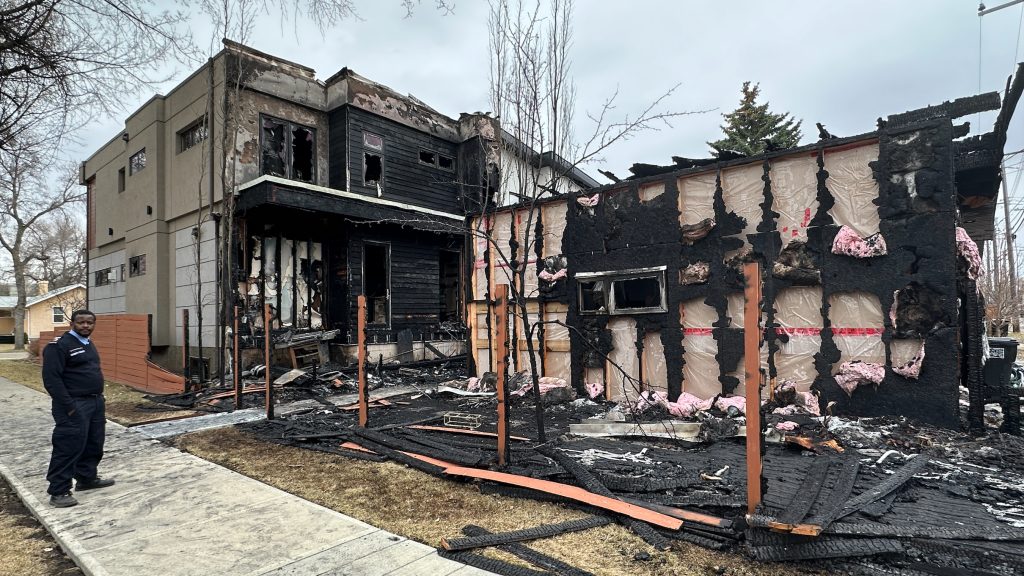B.C. epidemiologist says there are better ways to track COVID-19 than contact tracing
Posted November 26, 2020 6:21 am.
VANCOUVER (NEWS 1130) – Is contact tracing the best way to track COVID-19? As case numbers continue to grow in B.C., an expert says we should be shifting our focus when it comes to testing, or at least adding additional methods.
“We need to establish something that isn’t primarily testing symptomatic individuals and then initiating contact tracing after someone is symptomatic,” says Caroline Colijn, SFU mathematician and Canada 150 Research Chair in Mathematics for Infection, Evolution and Public Health.
She says it’s hard to compare the first wave of COVID-19 to the second, telling NEWS 1130 we had a “tiny bump” during the spring and shut everything down.
“We didn’t finish a first wave and the ‘wave’ language is part of the problem,” says Colijn.
We are testing, tracing + isolating but “barely holding on” as cases surge, according to Dr. Bonnie Henry.
We're hearing from @CarolineColijn who says there are better ways to track the virusL like pooled testing methods such as wastewater sampling on @NEWS1130— Ash Kelly she/her (settler) (@AshDKelly) November 26, 2020
“We had a tiny bump and we shut everything down. We took dramatic action and it worked, it worked great but we didn’t get immune.”
She doesn’t believe it’s likely there will be another full shutdown with the compliance level we saw in the spring but worries contact tracing will not be enough to keep cases low enough to keep businesses open.
Pooled testing techniques
Colijn suggests some sort of pooled testing techniques could help us find a way to live with COVID-19 and keep it under control.
“From Quebec, Ontario, across the Prairies and to B.C., we want to reopen to the extent that testing symptomatic people and then contact tracing; the limitations of that means that that’s not gonna be enough for the amount of economic and social activity we need so we need to do something else,” says Colijn.
“Pooled testing by regular screening is a form of something else, so is testing all asymptomatic contacts in concert with other measures, so is what we’re doing, which is kind of intermittent lockdowns or or very wide, widespread distancing measures while tracing keeps up, catches up and testing catches up,” she says.
Colijn says relying on symptomatic testing and contact tracing alone means cycling though rounds of relaxing measures shutdowns.
Related articles:
-
Deadliest day of pandemic in B.C.: 13 COVID-19 deaths, 738 infections
-
ICU doctor says frontline workers suffer physical, emotional and spiritual toll fighting pandemic
-
COVID-19 modelling projects Canada could see 20,000 to 60,000 cases a day by end of 2020
-
Better communication, rapid COVID-19 testing needed in B.C. seniors care: report
Relying less on symptomatic isolation and detecting the virus in a group of people is the idea behind testing wastewater, in workplaces for example.
“You don’t have to test every individual twice a week, but you group them and then if anything comes up positive then you take further action,” Colijn says.
B.C. reported its deadliest day yet in the pandemic on Wednesday. That came with another 738 new cases of COVID-19, as well as a daily high for hospitalizations due to the virus.
BC's #covid19 update Nov 25
*738* New cases – 29086
13 death-271 total
Hosp/ICU (284/61) 294/61
Active (7732)7816
Isolated (10283)10270
19814 Recovered
VCH (7995)+169
FH (17725)+443
Int (1352)+70
Island (505)+21
North (679)+35#bcpoli @NEWS1130— LizaYuzda (@LizaYuzda) November 25, 2020
The Fraser Health region continues to lead the province in cases, however, communities across B.C. are now dealing with virus infections.
Colijn says that while positivity rates can be hard to interpret, if we’re seeing the fraction of people testing positive for COVID-19 increasing from one week to the next and testing practices haven’t changed, something needs to.
“It can also reflect the fact that we’re not testing super, super widely, and that’s something that jurisdictions get to choose because they need to know what their testing capacity is, just numbers of tests but also the public health capacity for processing tests,” she explains.
PHO says rapid testing on the horizon
Provincial Health Minister Adrian Dix detailed the hiring efforts to date that have brought 222 new contact tracers on board in the last week.
He says Statistics Canada is sending 70 federal workers to assist B.C. contact tracers, which brings the total number of people working on tracing the virus in our province to nearly 1,000.
Dix says there will be at least another 200 people hired in the coming days.
.@adriandix says hospital bed capacity in #BC right now is at 72.3% and 56% for critical care beds.
Re: contact tracing hires, he says 222 more workers in place now bring total up to 935 and more resources promised by #Ottawa to bring numbers past 1000. #bcpoli @NEWS1130
— Marcella Bernardo (@MBernardoNews) November 25, 2020
On Wednesday, Provincial Health Officer Dr. Bonnie Henry said a number of rapid testing machines had been received in B.C. from the provincial government.
“We have received 131 of the machines and 27,000 tests. However, as you can tell that would not be enough, for example, to do all of our health care workers in long-term care even once,” she said. “At this point, and we are working on how we can test deploy those machines to help us understand when outbreaks are happening when people need to be tested rapidly in the community.”
Another 500,000 antigen tests have also been acquired, Henry said, adding there were limits to how these tests can be used as they need to be done by health-care professionals and are only licensed to be used on people who are symptomatic.
She told reporters that the province was still working on how best to use these tests but added they aren’t completely reliable.
B.C. is expecting more tests to arrive. Henry said she hopes to see other types of rapid testing get approval for asymptomatic testing.
Meanwhile, Henry said the team, which she is part of, working on the province’s vaccine program will be working on distribution as soon as one is available.
“Hopefully, as early as January,” Henry said, adding it’ll take some time for B.C. to get doses of a vaccine when it’s available.
People who are most at risk will get priority. It’s still unclear how many vaccines will be allocated to B.C., meaning any plans on how to get shots to people is still up in the air.








